WisgateOS LNS and CUPS Configuration
This document shows how to connect the WisGate Edge Gateway with the WisGateOS to The Things Network via Basics Station, either using LNS or CUPS.
If you already have a TTN account, you can use your The Things ID credentials and log in to the TTNv3.
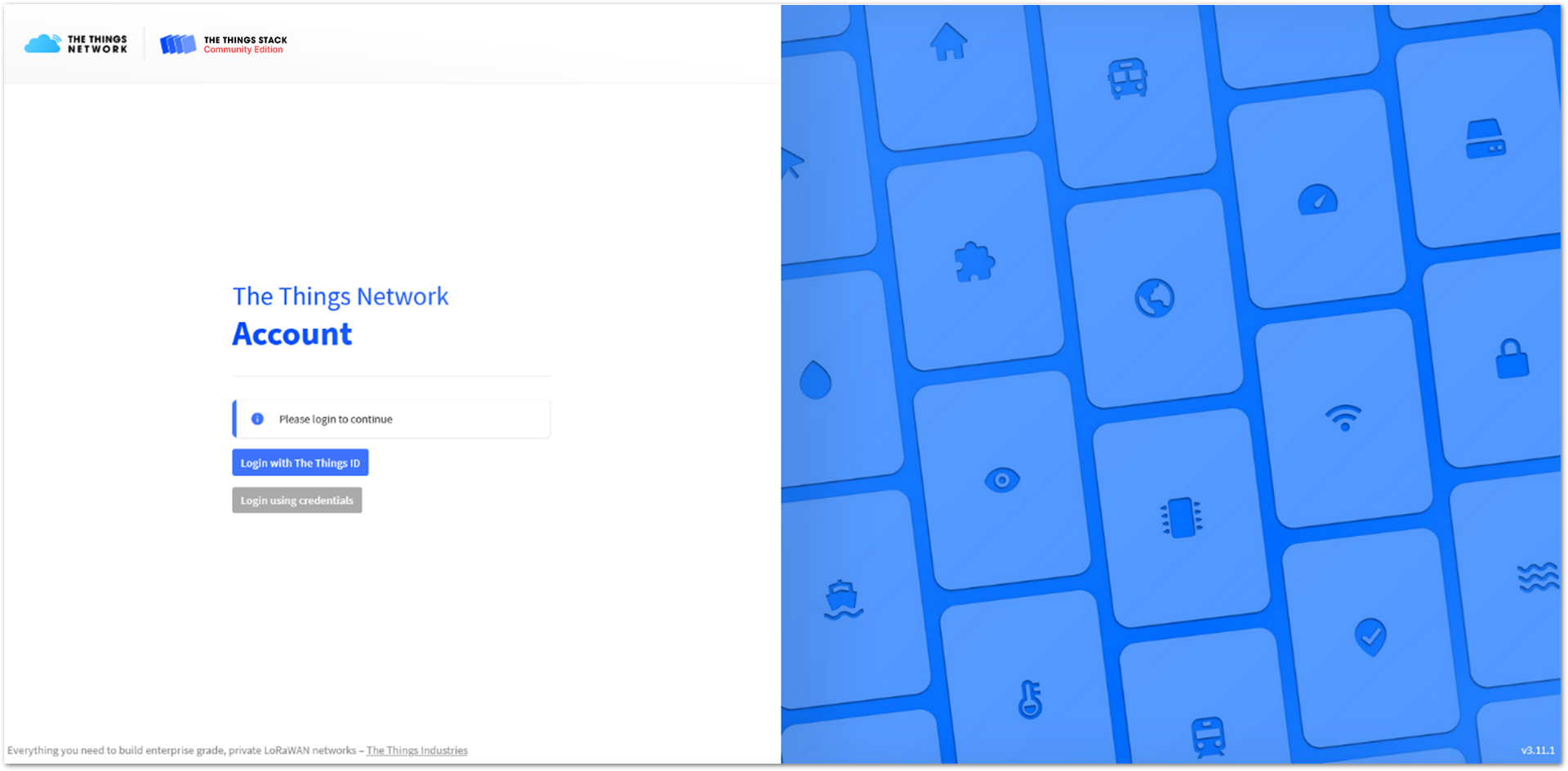 Figure 1: The Things Stack Home Page
Figure 1: The Things Stack Home PageRegister Gateway in TTNv3
- If you haven't registered your commercial gateway, click Register a gateway. But if you have already registered your gateway before, go to Gateways and click + Add gateway.
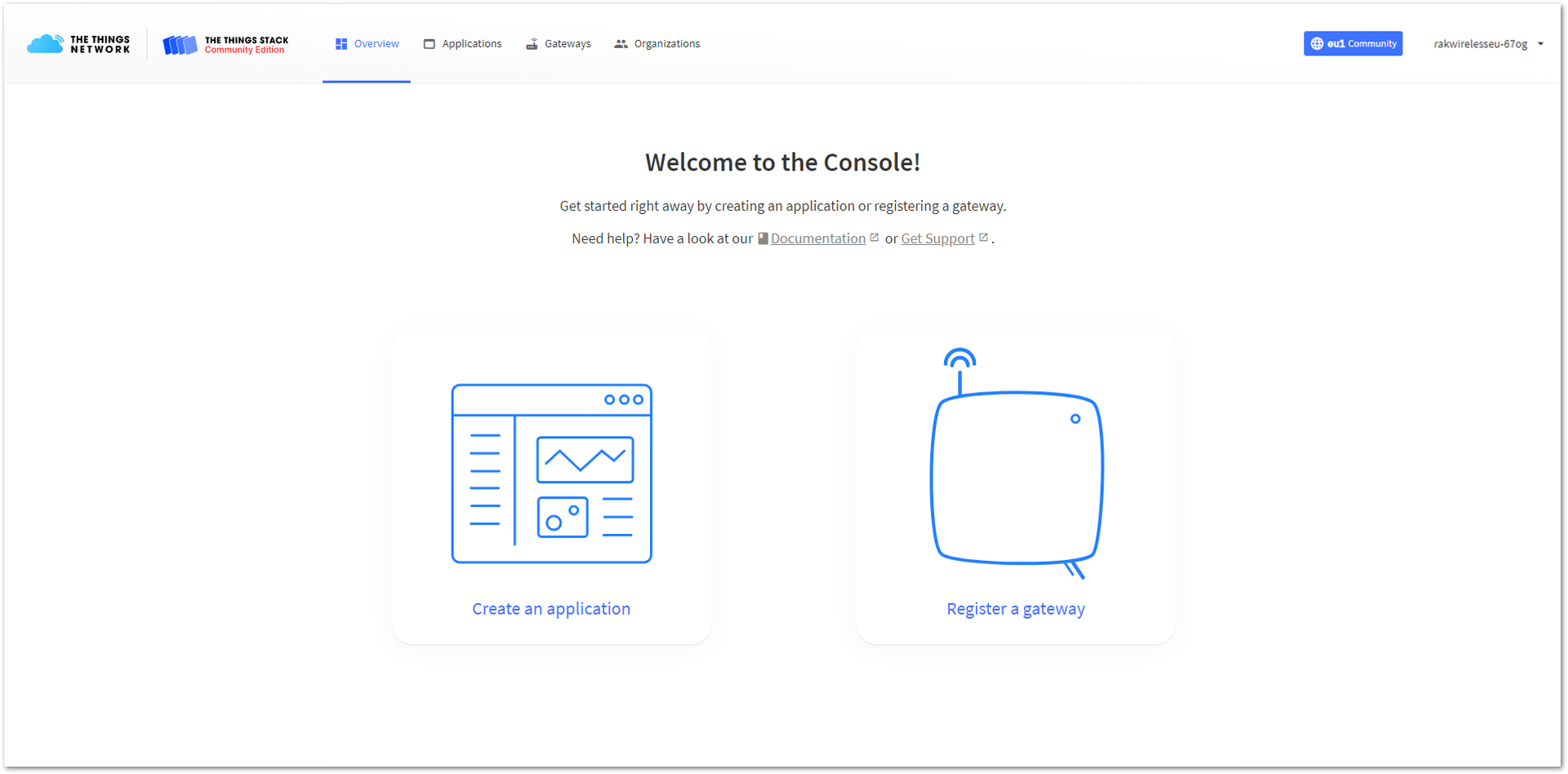 Figure 1: Console Page After a Successful Login
Figure 1: Console Page After a Successful Login- Fill in the necessary information:
- Owner – Automatically filled by The Things Stack, based on user's account or created Organization.
- Gateway ID – This will be the unique ID of your gateway in the Network. ID must contain only lowercase letters, numbers, and dashes (-).
- Gateway EUI - A 64-bit extended unique identifier for your gateway. The gateway's EUI can be found either on the sticker on the casing or by going to the LoRa Network Settings page in the LoRa Gateway menu accessible via the Web UI.
- Gateway name – A name for the gateway.
- Gateway description (optional) - Optional gateway description; can also be used to save notes about the gateway.
- Gateway Server address - The address of the Gateway Server to connect to.
- Frequency plan - The frequency plan for your region used by the gateway.
The other settings are optional and can be changed to satisfy your requirements.
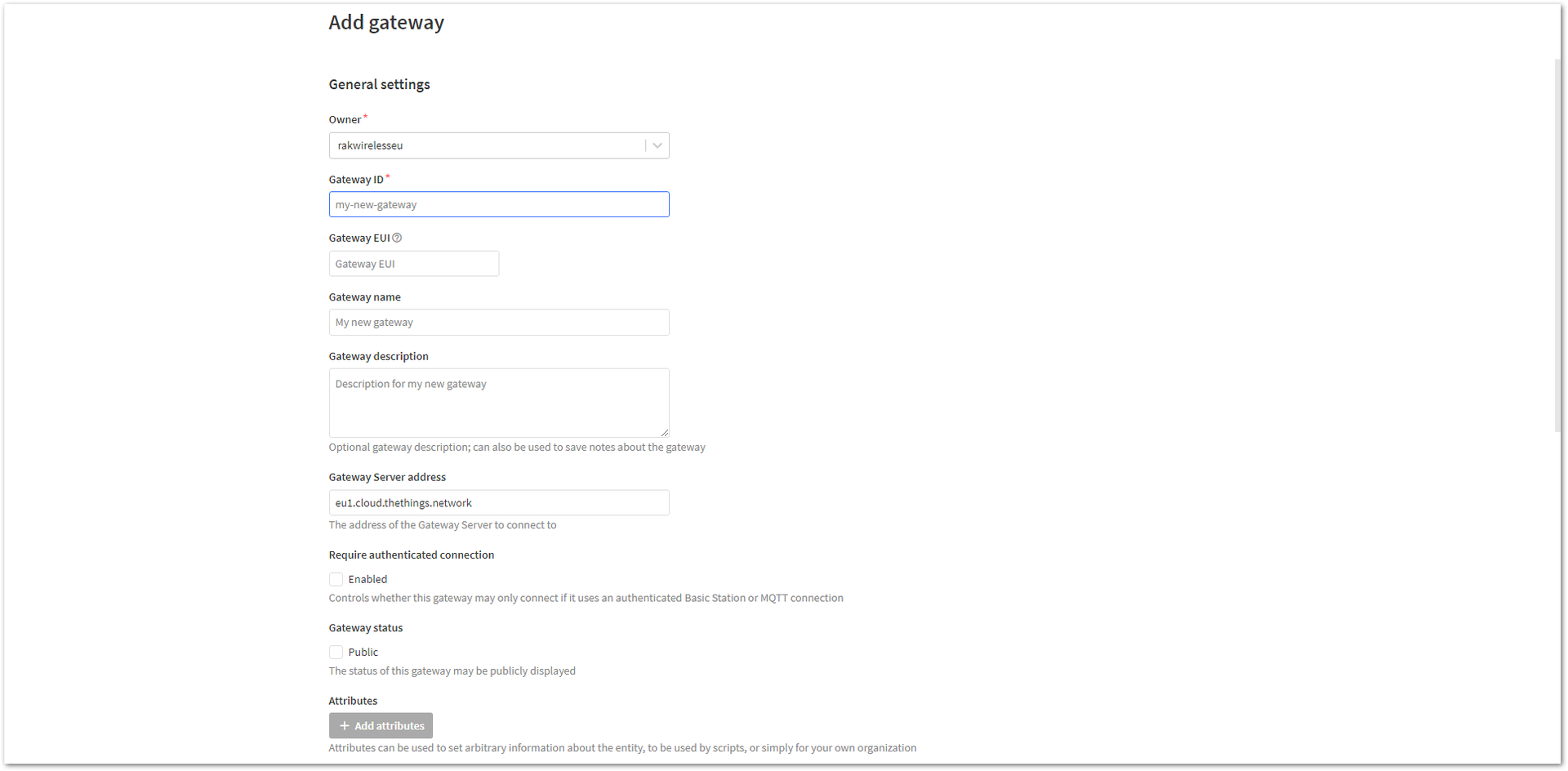 Figure 1: Adding a Gateway
Figure 1: Adding a Gateway- Scroll down and click Create gateway.
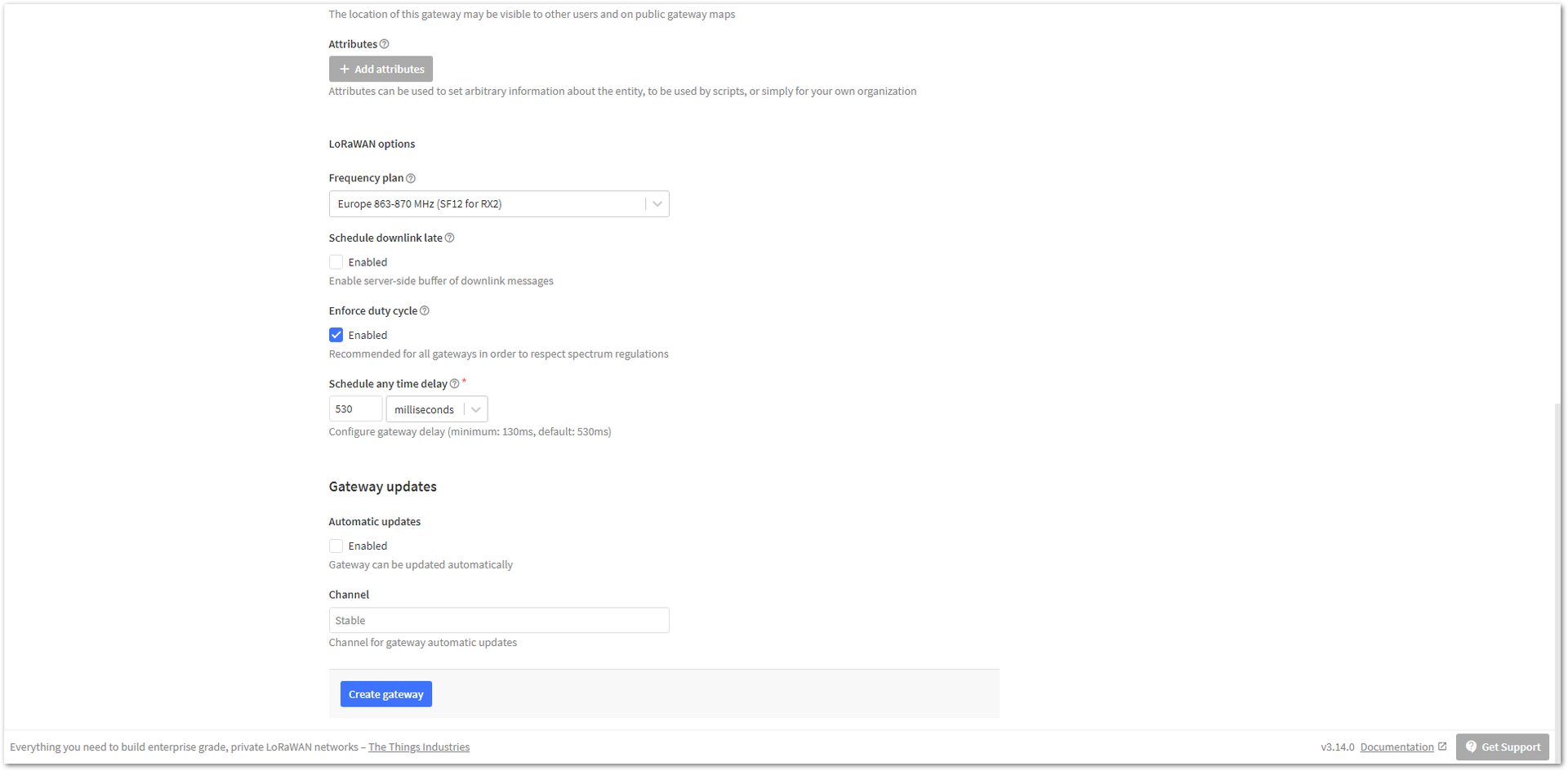 Figure 1: Register the Gateway
Figure 1: Register the GatewayTTNv3 supports TLS server authentication and Client token, which requires a trust file and a key file in configuring the gateway to successfully connect it to the network. You can connect also the gateway to TTN V3 by using LNS or CUPS Server.
LNSS
Connect the Gateway via LNS Server
If you are going to use LNS server to connect to TTN V3, you need to generate a LNS key.
- To generate a key file, from the Overview page of the registered Gateway, you need to navigate to API keys.
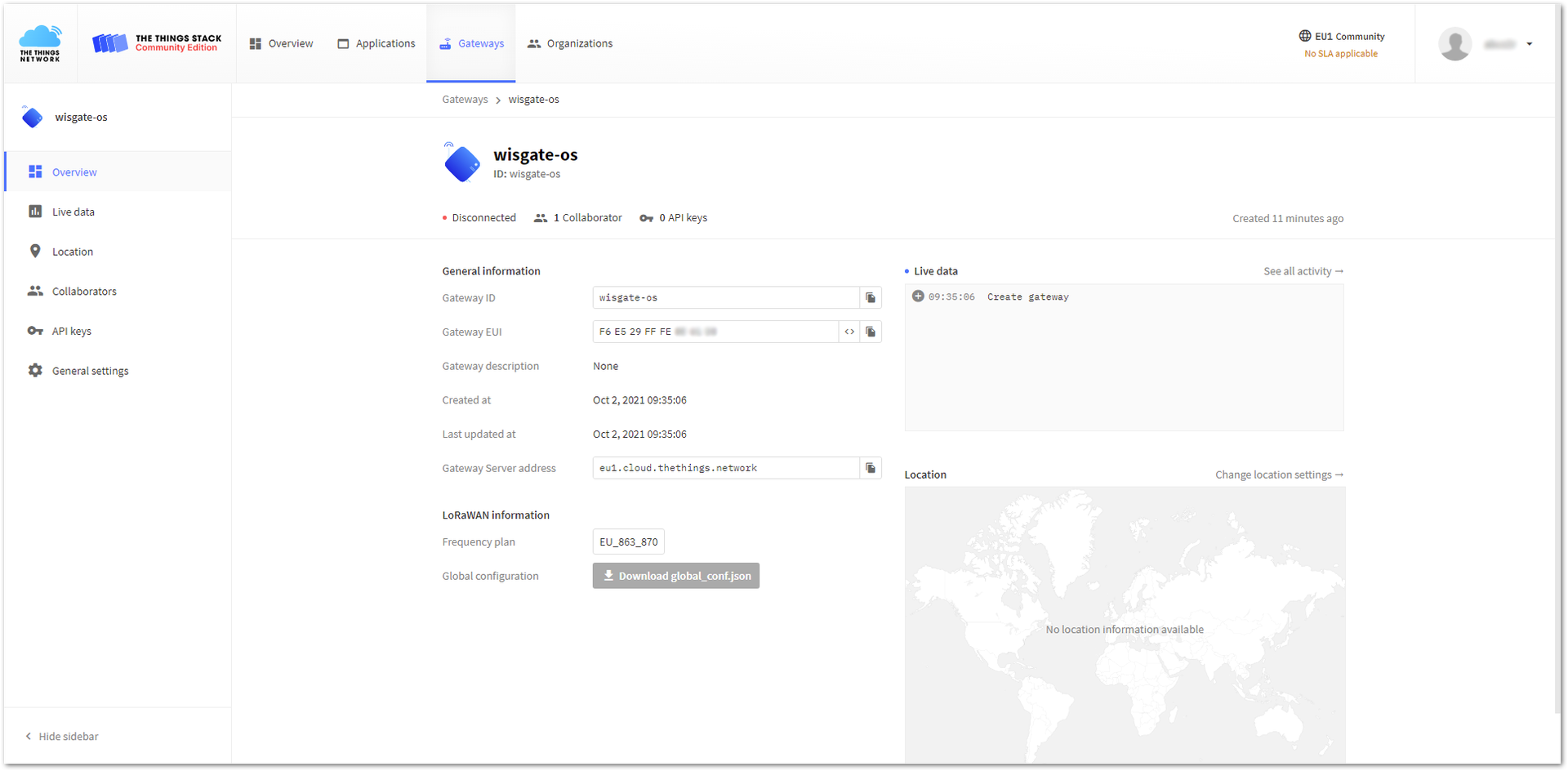 Figure 1: Overview Page
Figure 1: Overview Page- In the API keys page, choose + Add API key.
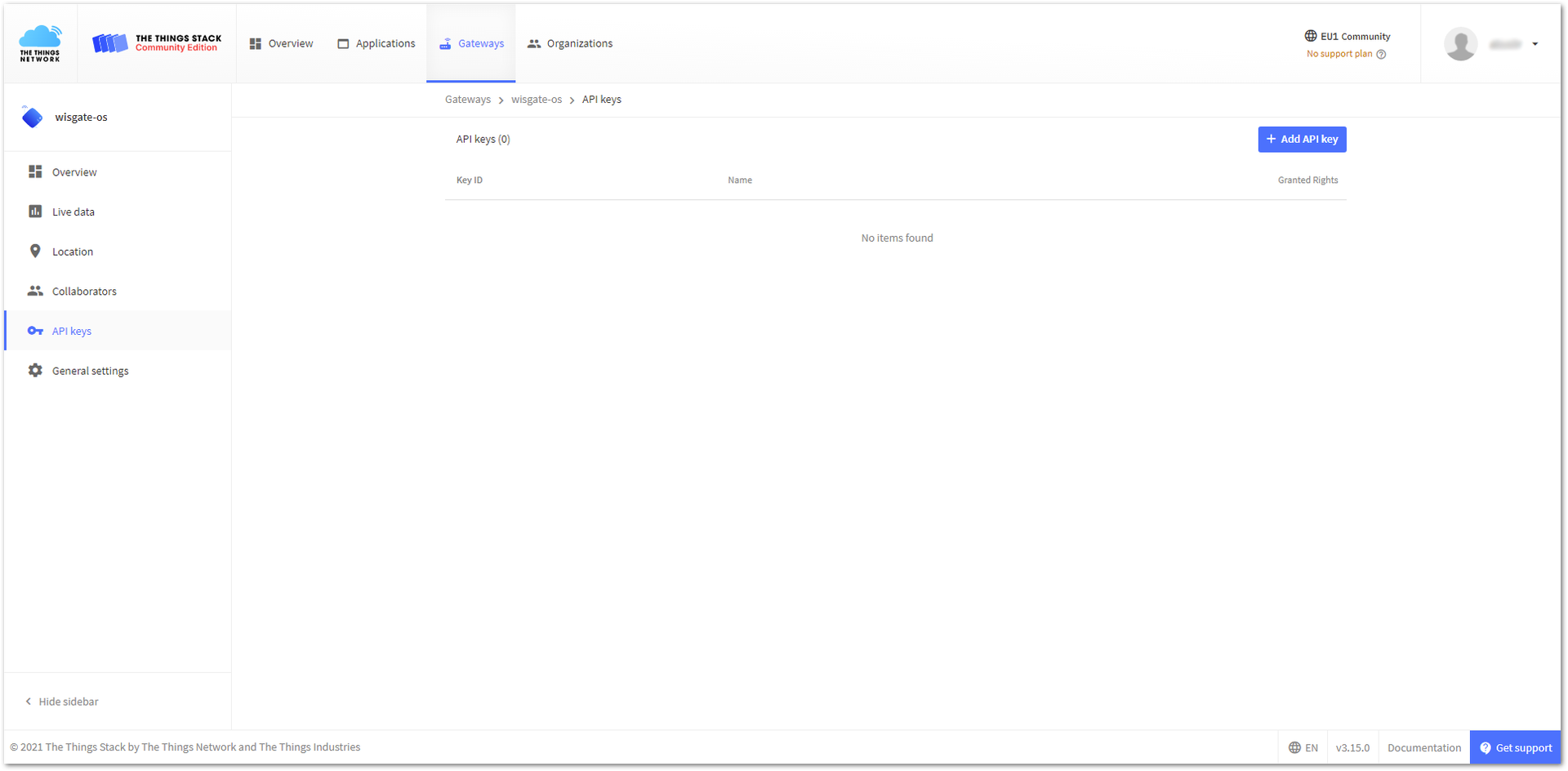 Figure 1: API Key Page
Figure 1: API Key Page- The Name field is the name of the key, and you can type a name of your taste (for example: LNS_key). Then choose Grant individual rights and select Link as Gateway to a Gateway for traffic exchange, i.e. read uplink and write downlink.
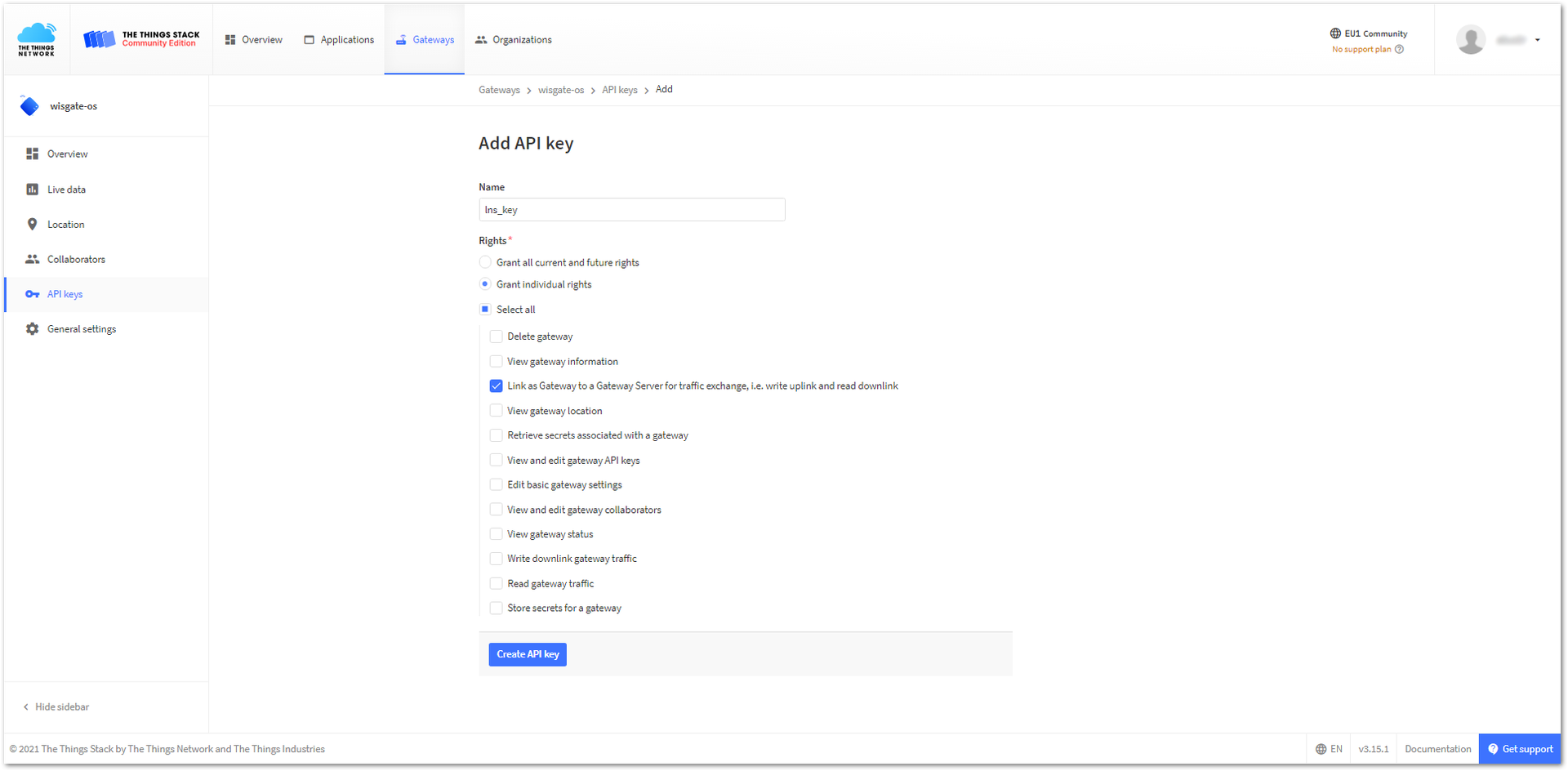 Figure 1: Generating an API LNS Key
Figure 1: Generating an API LNS Key- To generate the key, choose Create API key. A window will pop up, telling you to copy the generated key.
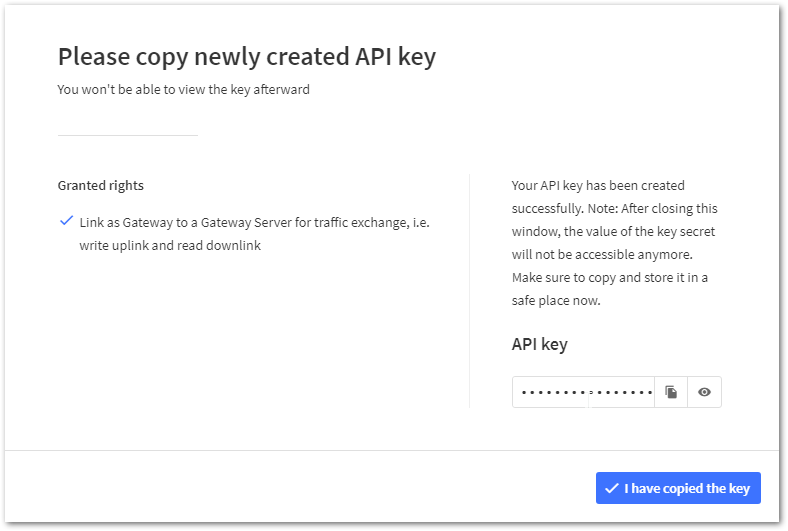 Figure 1: Generated API LNS Key
Figure 1: Generated API LNS KeyThe generated key must be copied and saved to a .txt file (or other), as it won’t be able to be viewed or copied after that.
- Click I have copied the key to proceed.
Configure the Gateway to Use LNS Server
-
To configure the gateway, access your gateway via the Web UI.
-
By default, the gateway is configured to work as Network server. You need to set the gateway to work as Basics Station in the Lora Network menu: LoRa Network > Network Settings > Mode drop-down menu > Basics Station.
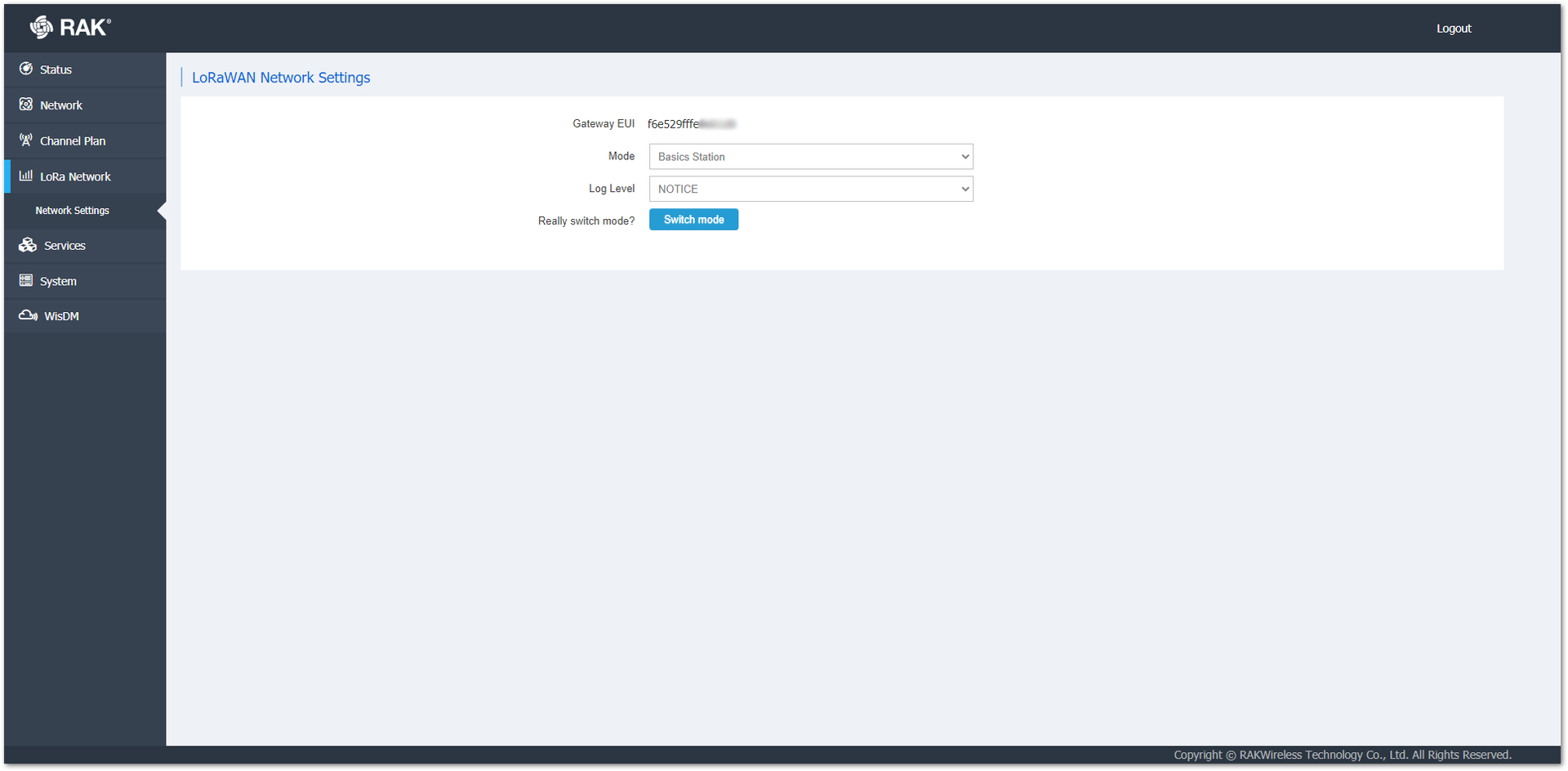 Figure 1: Changing the Working Mode
Figure 1: Changing the Working Mode-
To set the changes, you need to select Switch mode. After that, the Basics Station Configuration pane settings will show up.
-
To connect the gateway to TTNv3, the following parameters must be configured:
-
Server – For server, you need to choose LNS Server.
-
URI – This is the link to The Things Stack server. For this example, the gateway is connected to the European cluster. For Europe, fill in the following:
wss://eu1.cloud.thethings.network. -
Port – The LNS Server uses port 8887.
-
Authentication Mode – TTN v3 supports server authentication and Client token. Choose TLS server authentication and Client token. When selected, the trust and the token field will show up.
- trust – For trust, it uses the Let’s Encrypt ISRG ROOT X1 Trust certificate. The file with the certificate can be found in the Let's Encrypt site.
- token - This is the generated API key. The key must start with Authorization:.
Example:
Authorization: LNS_API_KEY
You need to replace LNS_API_KEY with the key generated previously. There should be a “space” between Authorization: and LNS_API_KEY, as shown in the example.
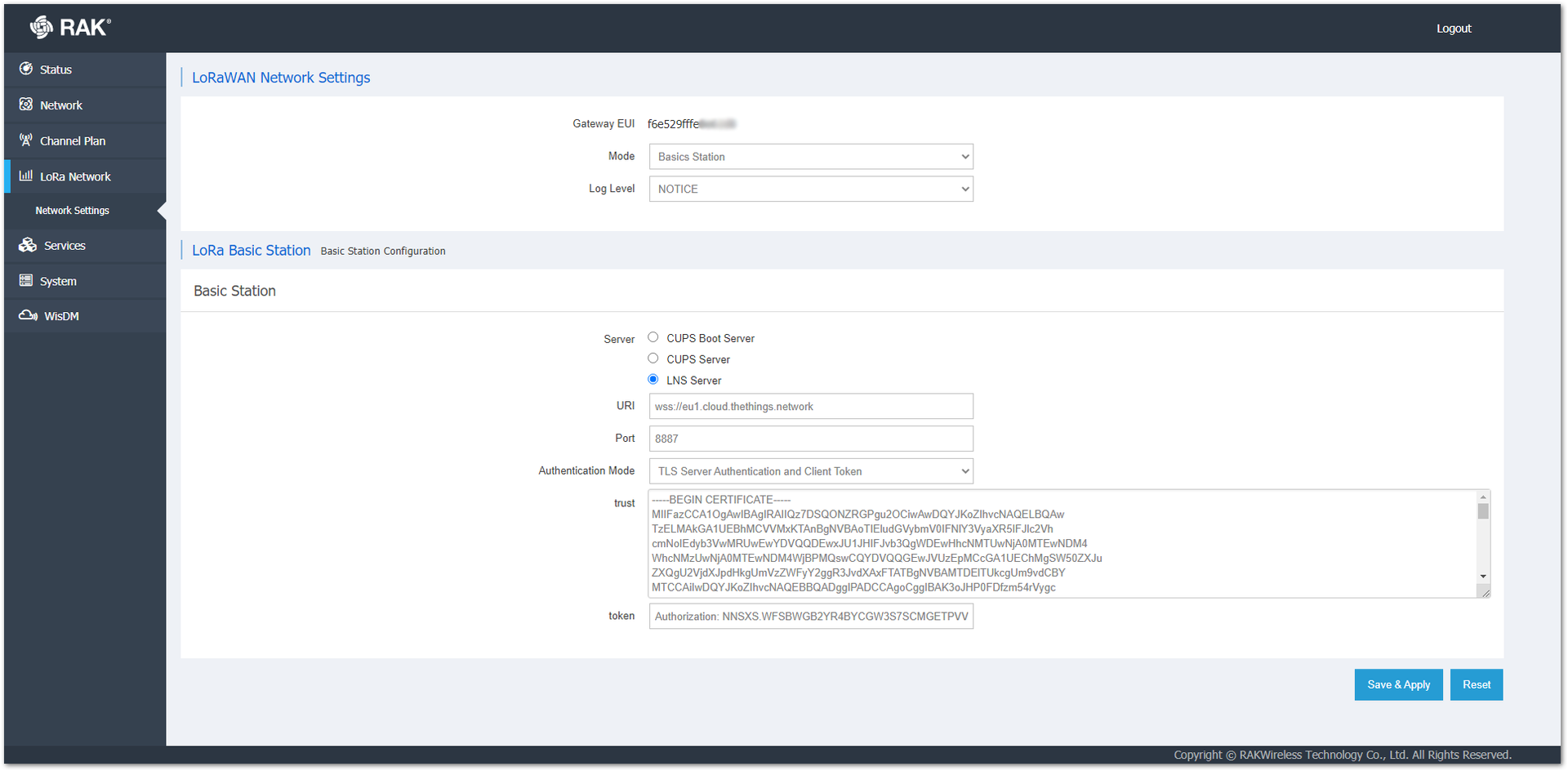 Figure 1: LoRa Basics Station Settings
Figure 1: LoRa Basics Station Settings- To save the changes, click Save & Apply.
If everything is configured right, the gateway should be connected to TTNv3 as Basics Station:
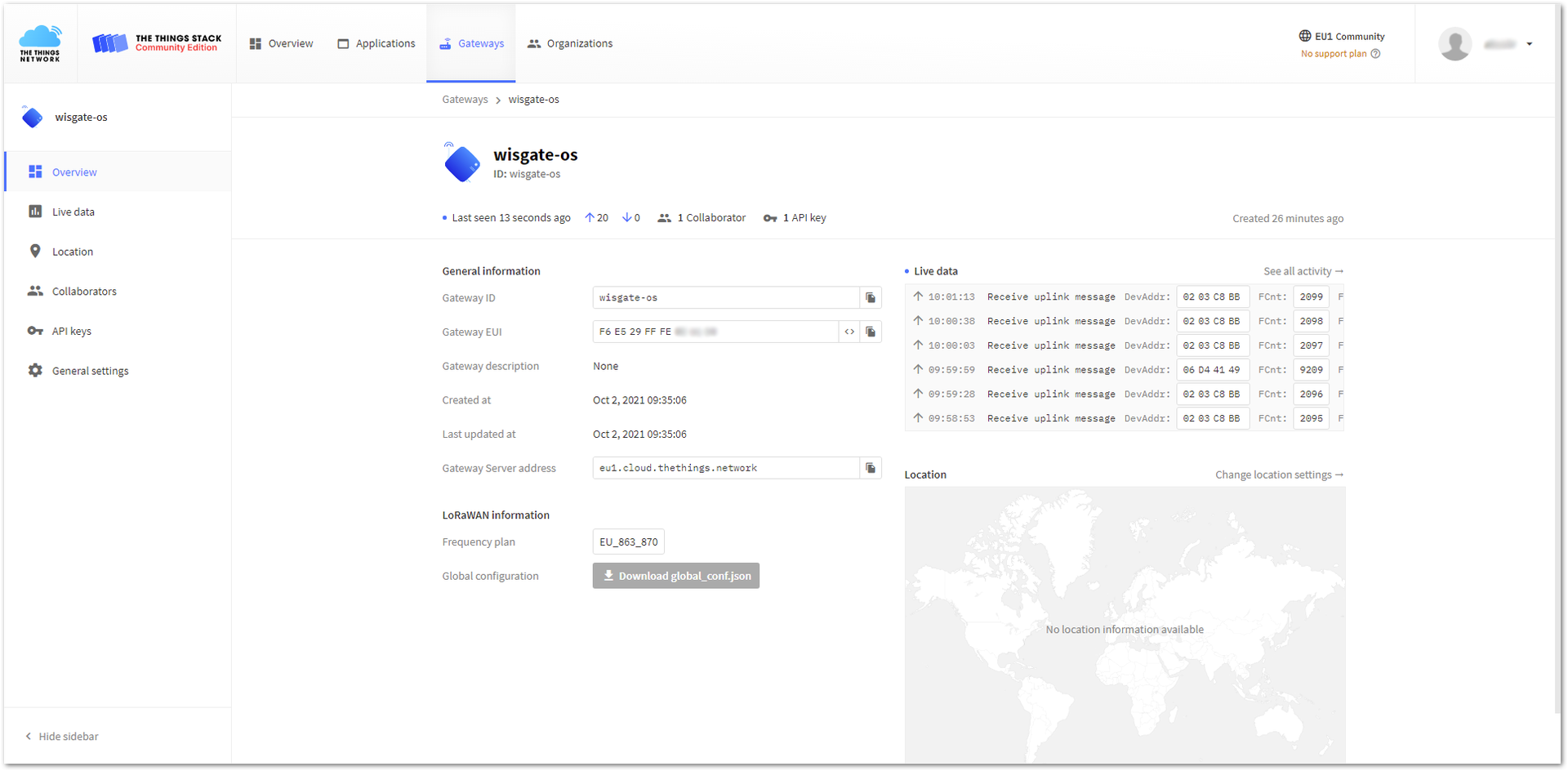 Figure 1: Successful Connection
Figure 1: Successful ConnectionCUPS
Connect the Gateway via CUPS Server
- Since CUPS automatically configures LNS, you need to generate two API keys: one for CUPS and one for LNS. The key can be generated from the TTN v3 Overview page > API keys.
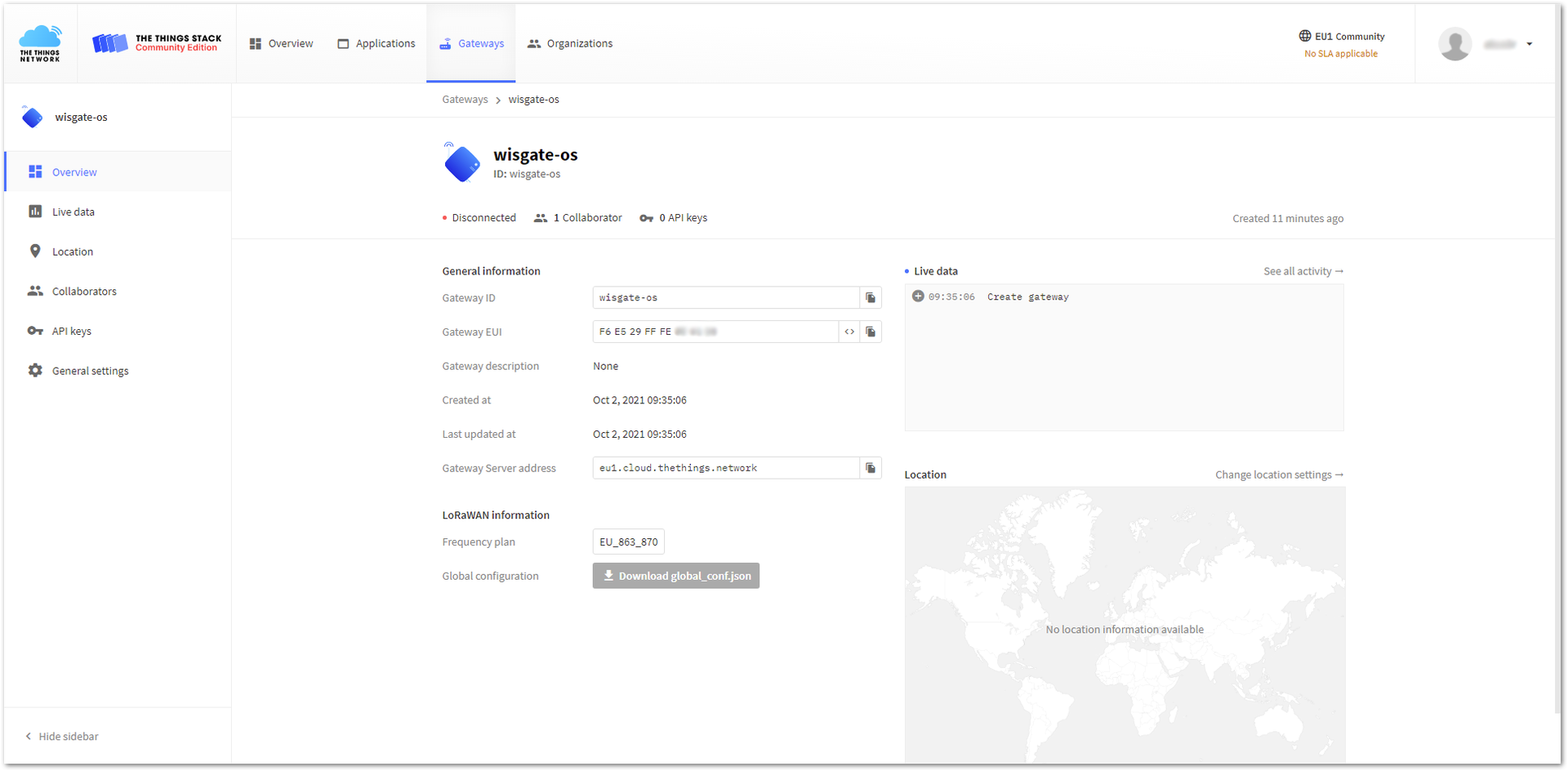 Figure 1: Overview Page
Figure 1: Overview Page- On the API keys page, choose + Add API key.
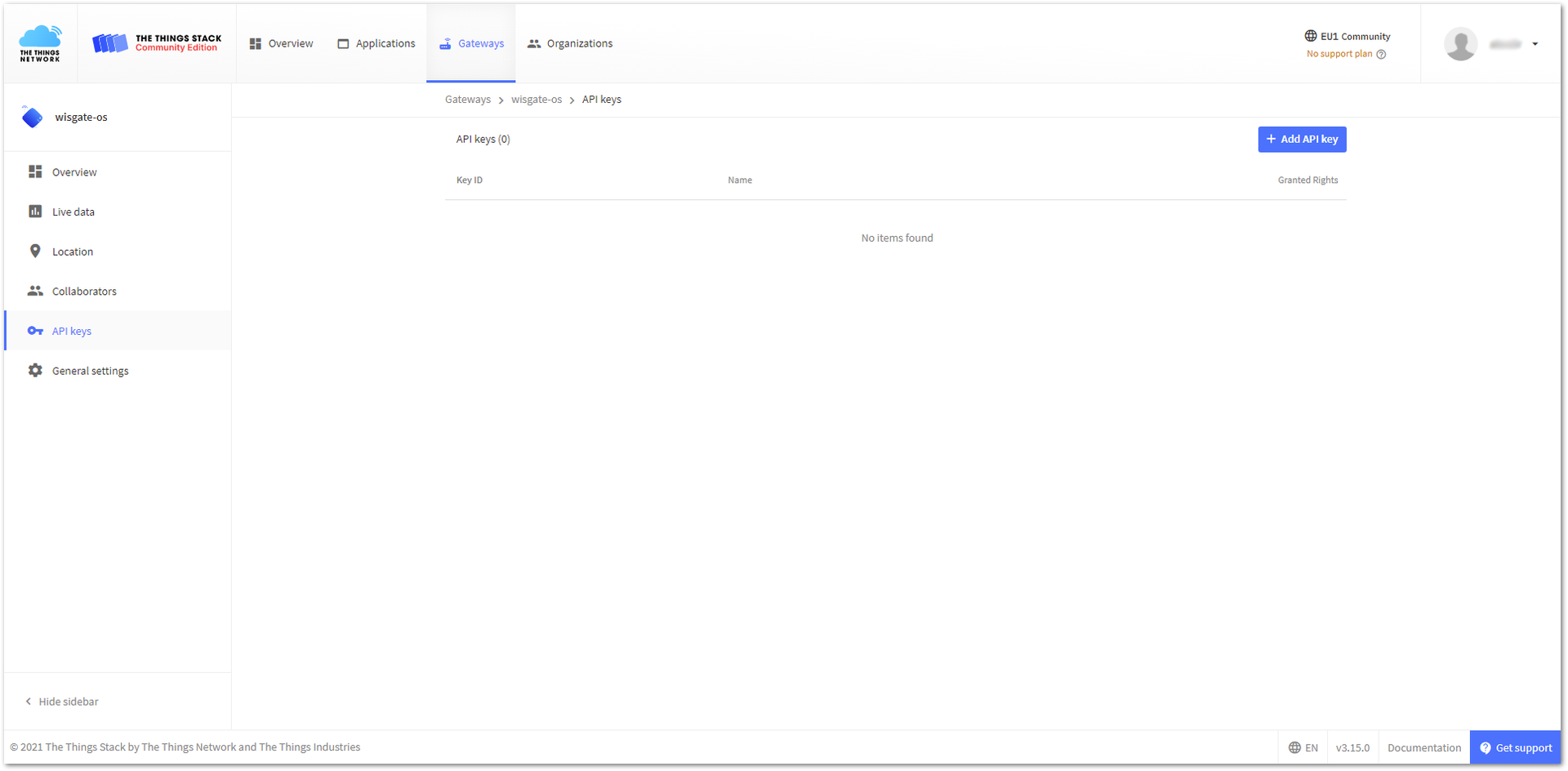 Figure 1: API Key Page
Figure 1: API Key Page- In the Name field, type the name of their LNS key (for example - LNS_key). Choose Grant individual rights, then select Link as Gateway to a Gateway for traffic exchange, i.e. read uplink and write downlink.
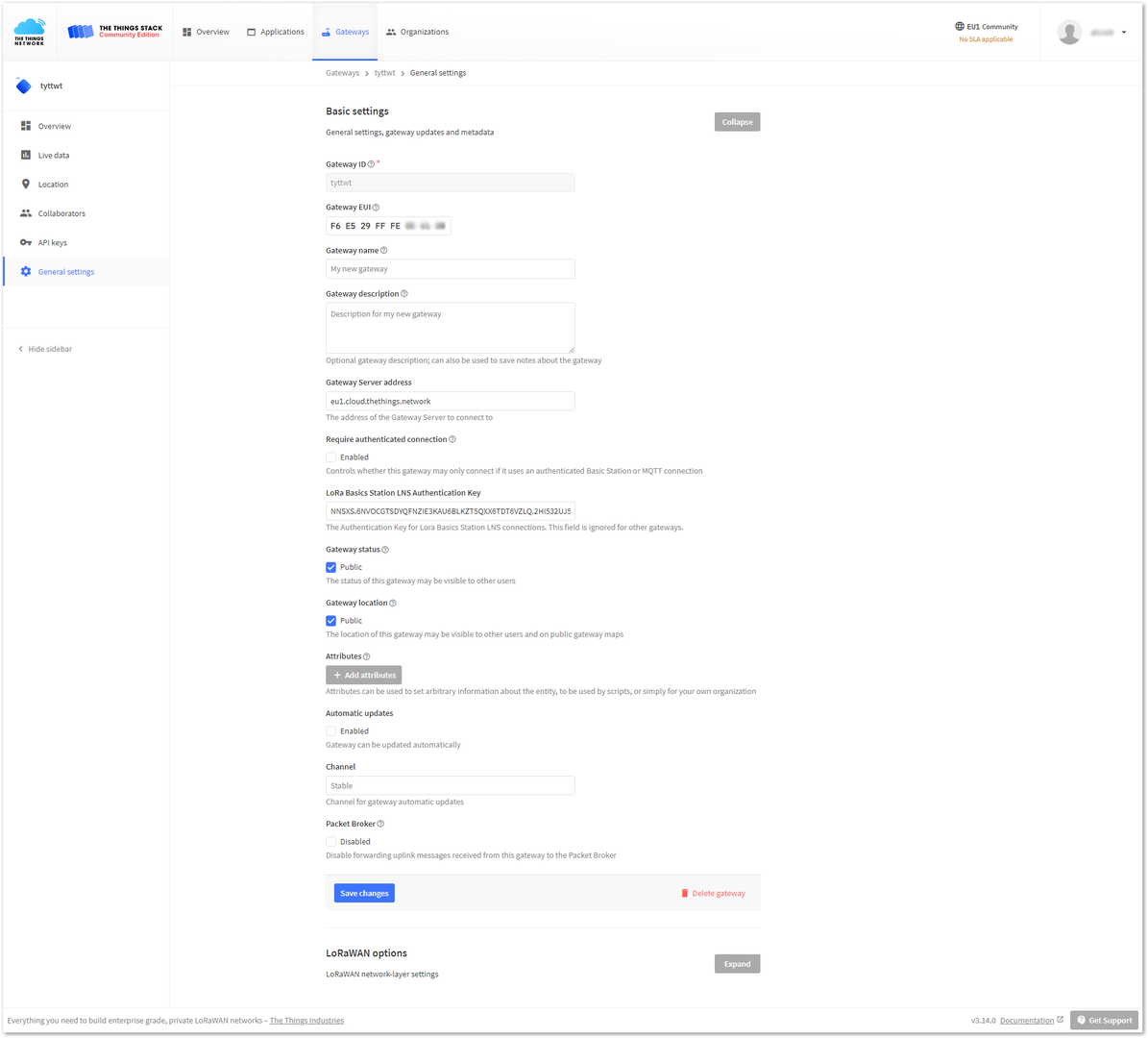 Figure 1: Generating a LNS API Key
Figure 1: Generating a LNS API Key- To generate the key, choose Create API key. The following window will pop up, telling you to copy the generated key.
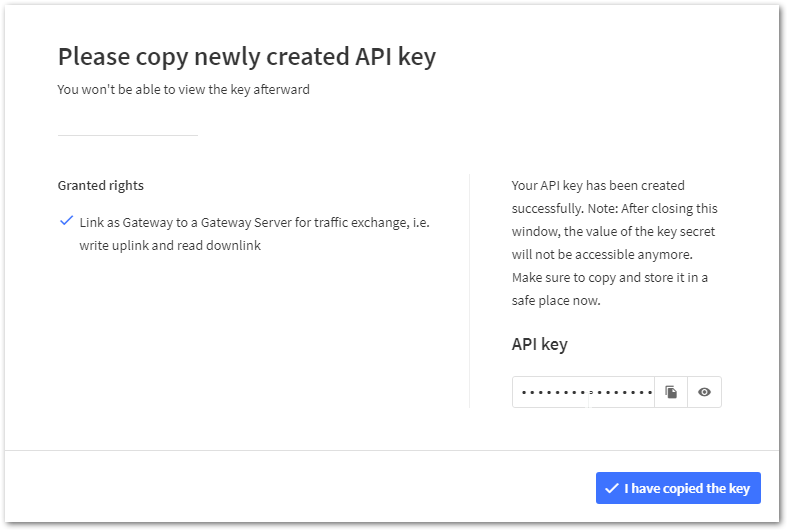 Figure 1: Copying the Generated Key
Figure 1: Copying the Generated KeyThe key must be copied and saved to a .txt file (or other), as it won’t be able to be viewed or copied after that.
-
Click I have copied the key to proceed.
-
To generate the next key, click again on the +Add API key. In the Name field, type the name of their CUPS key (for example - CUPS_key) and choose Grant individual rights and select the following rights:
· View gateway information
· Retrieve secrets associated with a gateway
· Edit basic gateway settings
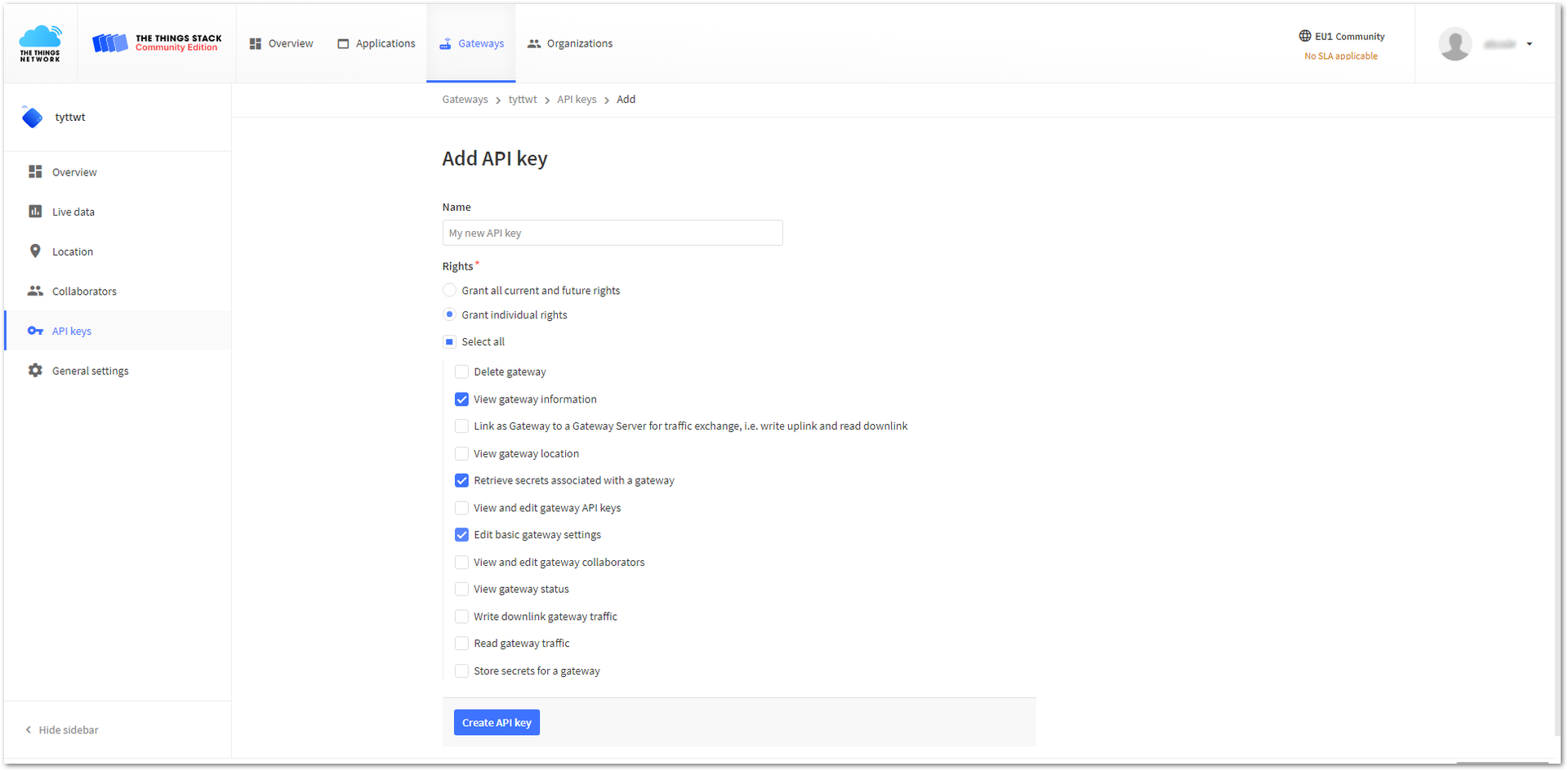 Figure 1: Generating a CUPS Generated Key
Figure 1: Generating a CUPS Generated KeyThe generated key must be copied and saved to a .txt file (or other), as it won’t be able to be viewed or copied after that.
-
Click I have copied the key to proceed.
-
Click on General settings and scroll down to LoRa Basics Station LNS Authentication Key and paste the copied LNS key there.
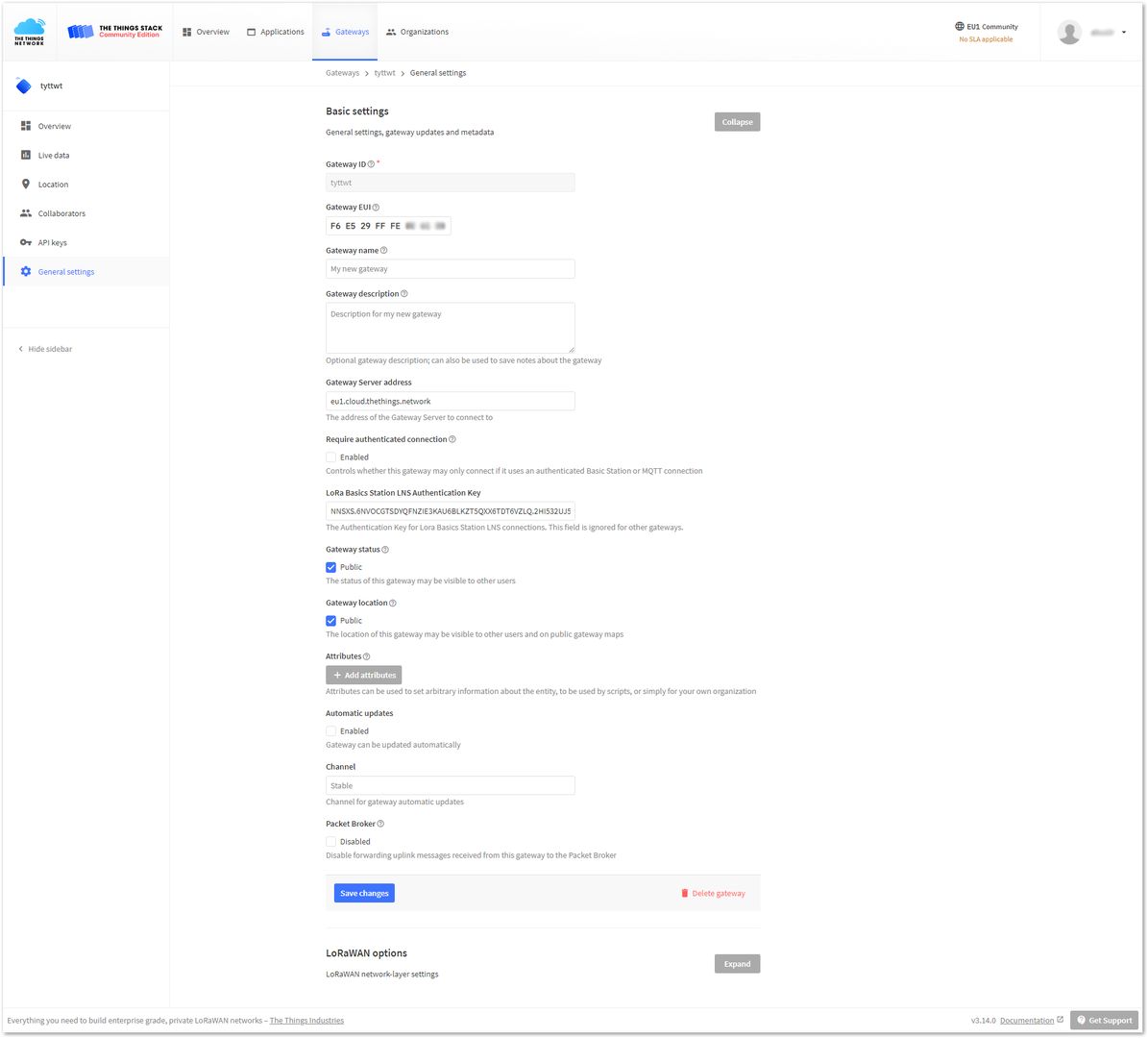 Figure 1: Configuring the LNS Authentication Key
Figure 1: Configuring the LNS Authentication Key- To save the changes, click Save changes.
Configure the Gateway to Use CUPS Server
-
To configure the gateway, you need to access it via the Web UI.
-
Configuring the gateway to work as Basics Station can be done in the LoRa Network menu: LoRa Network > Network Settings > Mode drop-down menu > Basics Station.
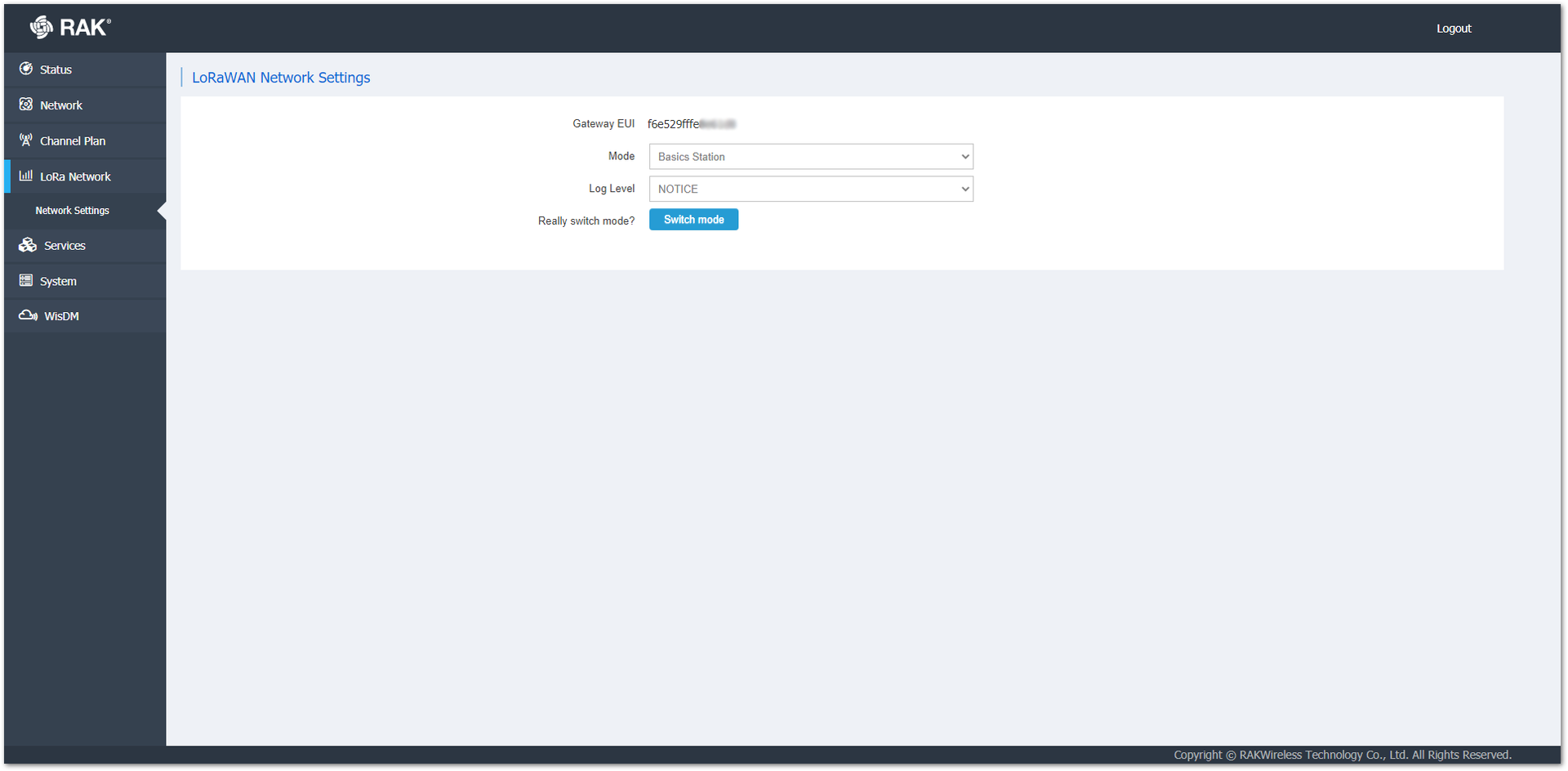 Figure 1: Changing the Working Mode
Figure 1: Changing the Working Mode-
Select Switch mode to apply the change. After that, the Basics Station Configuration pane settings will show up.
-
To connect the gateway to TTNv3, the following parameters must be configured:
- Server – For server, the user need to choose CUPS Server.
- URI – This is the link to The Things Stack server. For this example, the gateway is connected to the European cluster. For Europe, fill in the following:
https://eu1.cloud.thethings.network. - Port – The CUPS Server uses port 433.
- Authentication Mode – TTN v3 supports server authentication and Client token. Choose TLS server authentication and Client token. When selected, the trust and the token field will show up.
- trust – For trust, it uses the Let’s Encrypt ISRG ROOT X1 Trust certificate. The file with the certificate can be found in the Let's Encrypt site.
- token - This is the generated CUPS API key. The key must start with Authorization:.
Example:
Authorization: CUPS_API_KEY
You need to replace CUPS_API_KEY with the key generated previously. There should be a “space” between Authorization: and CUPS_API_KEY, as shown in the example.
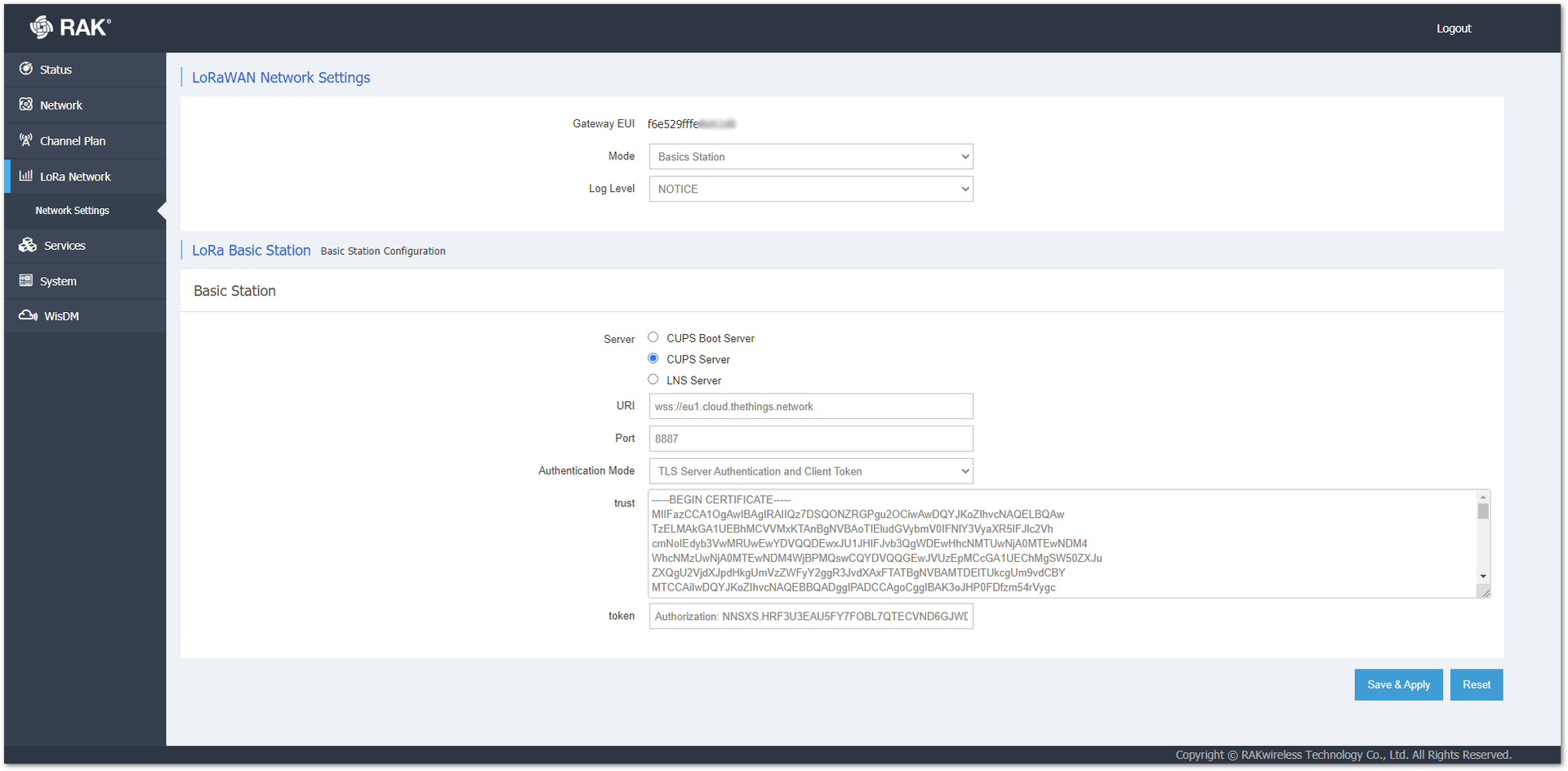 Figure 1: LoRa Basics Station Settings
Figure 1: LoRa Basics Station Settings- To save the changes, click Save & Apply.
If everything is configured right, the gateway should be connected to TTNv3 as Basics Station:
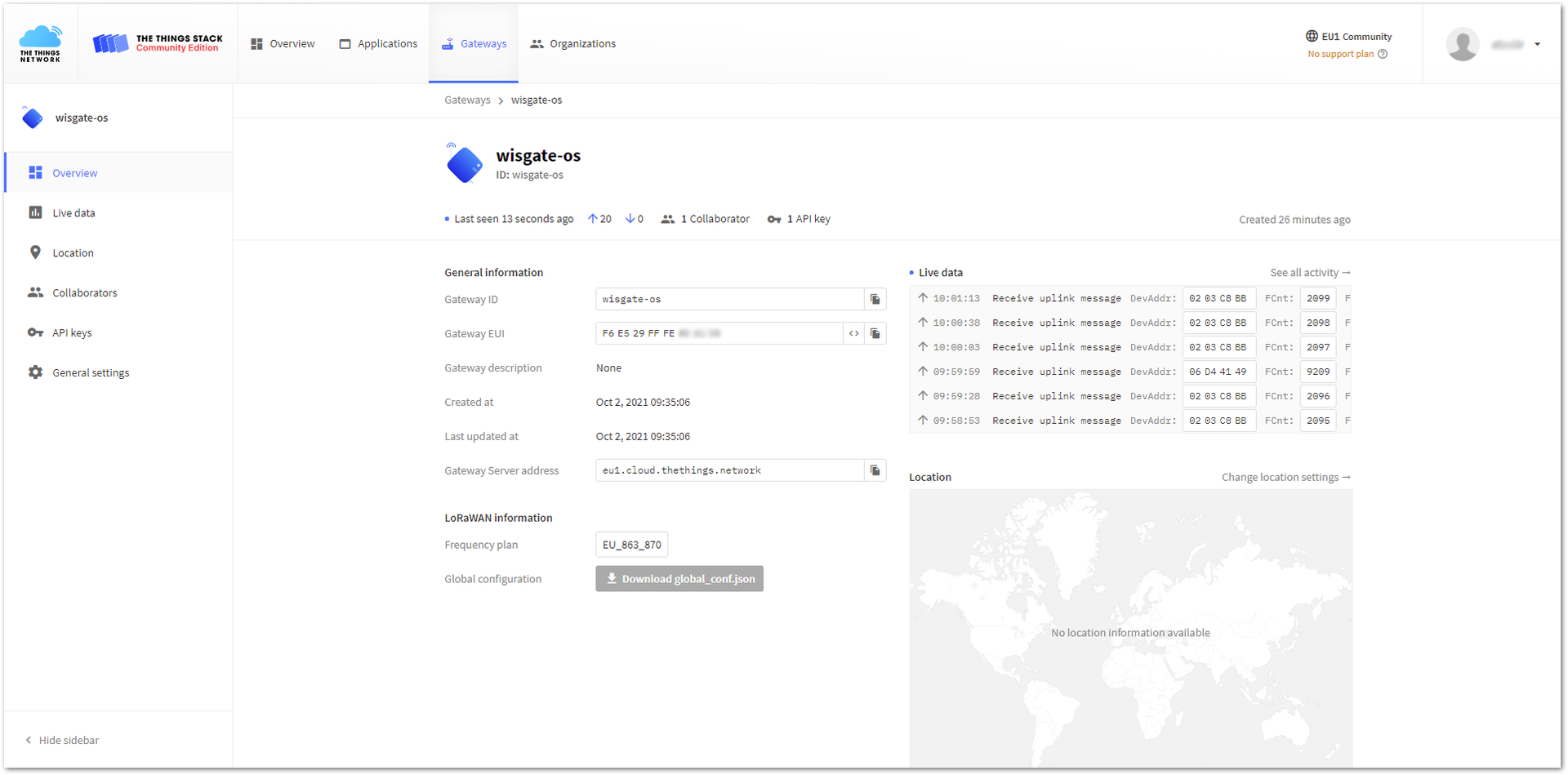 Figure 1: Successful Connection
Figure 1: Successful Connection